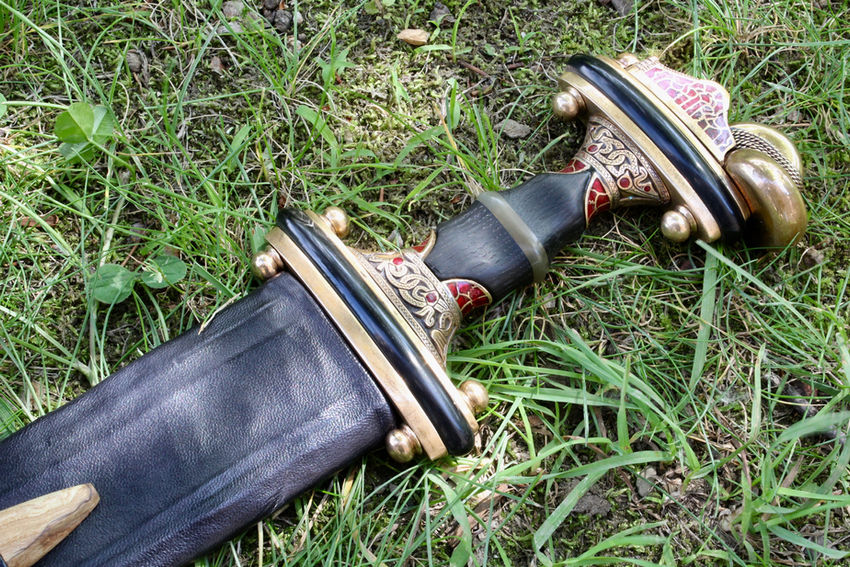
Naegling
Naegling is the culmination of four years of study in Germanic and Scandinavian myth, history, and material culture. I found a love for the poem Beowulf in my third year of college which features the brave eponymous hero fighting several beasts during the span of the poem. It is set in Vendel era Scandinavia and outlines the use of four swords throughout the narrative. The first, Hrunting, is given to Beowulf to fight the monstrous Grendel's mother but ultimately fails. The second, a sword of Giant's make, is used at the penultimate hour to save Beowulf from Grendel's mother. The third sword is used later in the poem by Beowulf to strike the serpent and it shatters in his hand. Lastly is the sword used by Wiglaf, Beowulf's kinsman. This sword is also of Giant's make and is able to wound the beast.
These four swords in and of themselves are characters that drive the story in important ways, and the way they are treated and described gives clear historical grounding to the poet's work. The sword that I was drawn especially to was Naegling, the kings sword. It was passed down to Beowulf by Hygelac, king of the Geats. This sword is Hrethel's, Hygelac's father's sword, and it is said that there was 'no finer treasure in the form of a sword' in Liuzza's translation. The sword Naegling is given to Beowulf along with a gift of land, a hall, and a throne. Hygelac's son dies and Beowulf is heir apparent.
The aged king comes to fight a serpent in the latter days of his life and does so without the help of his retainer. These warriors all give up in the face of danger and leave the king to fend for himself. Using the sword Naegling Beowulf swings at the serpents head but the blade breaks in the top third. Wiglaf comes to Beowulf's aid and together they are able to fend off and kill the serpent even as Beowulf succumbs to the serpents poison.
This sword is an interesting study. Through the clues given in the poem about the other swords as well as the basic time period of the events it is clear that the swords are Vendel period objects. The arms made in this transitional period were objects of high art. They combined gilded metals and garnet and other gems to create objects of pure opulence. They were often quite large and would have been an incredible symbol of status among Vendel era chieftains and kings. The sword was broken, was of incredible quality, and was an heirloom passed down between kings. This meant my recreation had to be faithful to these different aspects of the myth.
Enter the sword from Vehmaa. In this province of Finland there exists a sword that was found of incredible quality. It is dated to the 6th century and is broken in the top third. What's more this sword has the most complex pattern I have ever seen in an iron age sword. It is composed of at least 10 pattern welded bars for the core of the sword, not including the edges or the forge welded iron inlay. In the top third of one side there is a patterned serpent inlaid into the blade. This is where the sword is broken. It exists without a hilt as the original may have been worn away or removed over time. This sword was the perfect candidate for Beowulf's Naegling, as the blade matches all of the criteria and exemplifies the symbology of the poem.
The name of the blade itself means 'from nails.' I thought this was an auspicious name given that one of the processes for creating steel from iron is done in a hearth and often uses nails as the starting material. I chose to create my own steel for this sword over the course of a year by the light of the full moon. Once the year had been completed and I had about 80 pounds of material the real work began. I refined the material to create each of the elements of the sword and when the blade was finished I enlisted the help of my good friend Matt Berry of Hopkins Forge. He created wax models of a contemporary sword hilt I chose. The hilt is from Valstenarum and is without a blade. Below you see the fruits of nearly two years of work. The sword is hearth steel with cast bronze hilt pieces with water buffalo horn and bog oak for the grip.




















